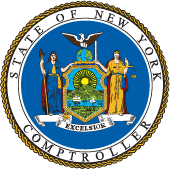The Temporary Assistance for Needy Families (TANF) program (Assistance Listing Number 93.558) was established in 1996 by the Personal Responsibility and Work Opportunity Reconciliation Act (PRWORA) as part of federal welfare reform. While most TANF policies in effect today originated from PRWORA, TANF has not received a full reauthorization since 2005, and continues to rely on short-term extensions. The continuing resolution signed March 15, 2025, extends the TANF program through September 30, 2025.
TANF is a block grant where states receive a fixed amount of federal funding. While states must adhere to the grant’s core purposes, assist needy families, end dependence on government benefits, reduce out of wedlock pregnancies and encourage two parent families, they have flexibility in how they use TANF funds. Other than cash needs, states can use funds for programs such as child care, employment training, education and transportation. Each state can define “needy” based on its own state guidelines. However, states have a maintenance of effort (MOE) requirement to spend a minimum amount of their own funds to receive TANF funds. In 2022, New York State met a specific work participation rate which allowed MOE to be reduced from 80 percent of historical spending levels to 75 percent. In 2023, New York State spent $5 billion on TANF and MOE expenditures.
In New York State, the two primary Temporary Assistance programs are Family Assistance (FA) and Safety Net Assistance (SNA). FA provides cash assistance and income support that helps low-income families with children to pay for housing, food, home energy and child care. TANF’s aim is to assist families in achieving economic security and stability through a work participation program and cost sharing requirements. Currently, there is a 60 month/five-year limit in receiving TANF funds as well as workforce requirements such as assignment to work activities, job readiness, job search, community service and education. If families exceed the five-year limit, they can receive continued assistance through SNA, which is not federally funded.
Funds to New York City
TANF funding is expected to be the City’s largest source of direct federal funding in fiscal year (FY) 2025, at about $2 billion, with more than half allocated to the Department of Social Services (DSS) (see Figure 1).
FIGURE 1 – TANF Funds Received by Department FY 2026 Preliminary Budget (in millions)
| Agency | FY 2025 | FY 2026 |
|---|---|---|
| Social Services | $1,240.7 | $984.0 |
| Homeless Services | 614.3 | 614.3 |
| Children’s Services | 129.0 | 129.0 |
| Youth & Community Devel. | 28.5 | 28.5 |
| Housing Preserv. & Devel. | .5 | .5 |
| Total | $ 2,013.1 | $1,756.4 |
Sources: NYC Office of Management and Budget; OSC analysis
FIGURE 2 – Total Family Assistance Caseloads
Sources: NYC Human Resources Administration; OSC analysis
*through February
Impact
- DSS uses the majority of the funds for family assistance grants, which are funded 85 percent through TANF, with the City contributing 15 percent (see Figure 2). In FY 2024, an average of 146,189 individuals received TANF funding each month. TANF funds also support multiple divisions throughout the agency, including domestic violence services, legal services, homeless prevention and administrative functions.
- Planned TANF spending on public assistance grants declines by $256 million from FY 2025 to FY 2026, despite rising caseloads. While family assistance caseloads fell early in the pandemic, they have grown since 2021 and reached the highest level of the last 10 years in the first eight months of FY 2025 (see Figure 2). OSC projects a City funds risk of $564 million in FY 2026 for all public assistance grants (including Family Assistance and Safety Net Assistance), due largely to a drop in City funding, but this risk could be higher if federal funds do not materialize. See OSC’s February 2025 report for details.
- The Department of Homeless Services (DHS) receives the second-largest allocation of TANF funds and uses it predominantly (approximately $540 million each year in FY 2025 and FY 2026) to support family shelter operations. Excluding asylum seekers, the number of individuals in families with children and adult families staying in DHS shelters has risen, averaging more than 38,200 in the first eight months of FY 2025, compared to around 35,300 in the first eight months of FY 2024 but below the average of around 39,000 in FY 2019 (see Figure 3).
- The Administration for Children’s Services (ACS) and the Department of Youth and Community Development (DYCD) receive smaller amounts of TANF funds, predominantly for child welfare support and youth employment programs.
FIGURE 3 – Families in Shelter
Sources: NYC Human Resources Administration; OSC analysis
